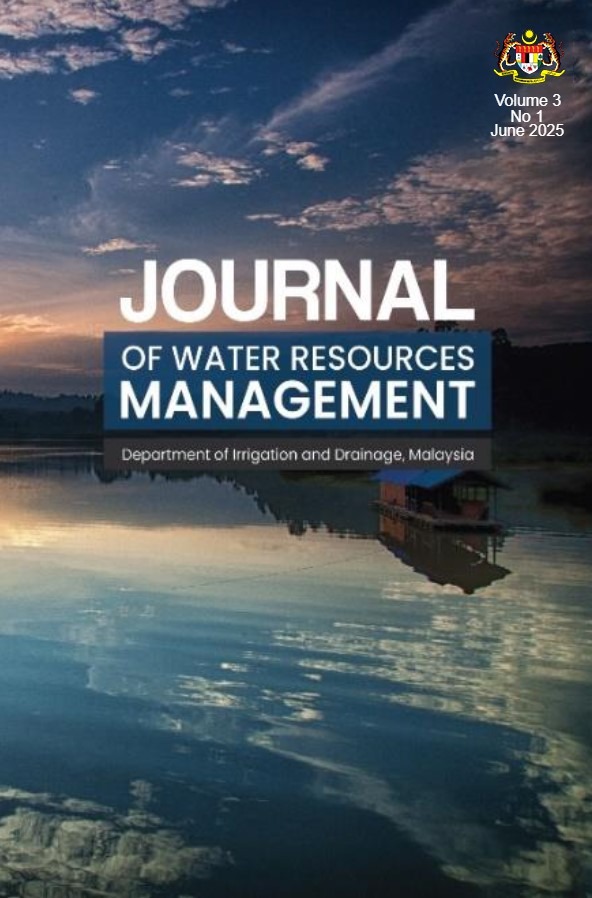Enhanced Flood Forecasting using Quantitative Precipitation Forecast from Weather Research Forecast-Artificial Neural Network (WRF-ANN) Model Post Processing
Published 10-07-2025
Keywords
- Quantitative Precipitation Forecast, Numerical Weather Prediction Model, Weather Research Forecast Model,Artificial Neural Network Model, Flood Forecasting
How to Cite
Copyright (c) 2025 Journal of Water Resources Management

This work is licensed under a Creative Commons Attribution-NonCommercial-ShareAlike 4.0 International License.
Abstract
Flood forecasting accuracy is crucial for authorities so that they can make better plans. There are many variables involved to provide accurate flood forecasting. The case study area is at Kelantan River Basin, where it experiences the northeast monsoon. QPF from the NWP model was process, evaluate, and use as an alternative to traditional rain gauge systems for input into an integrated hydrometeorological flood forecasting system. The direct QPF outputs from the WRF model with a horizontal resolution of 4 km x 4 km were validate using gauged rainfall measurements. The findings indicates that the WRF model produces QPF for rainfall forecasting. However, the accuracy is not very satisfactory. ANN model was used which integrates several WRF model products to increase the accuracy. After the post-processing using ANN, the accuracy of the QPF had greatly improved. After ANN post-processing, the best r value increased from 0.79 (direct QPF) to 0.99. The enhanced QPF model served as an alternate input for a rainfall-runoff model (HEC-HMS). The NSE value for HEC-HMS with rain gauge rainfall is 0.752 and after calibration is 0.932. The NSE value for the HEC-HMS with WRF-ANN QPF rainfall data is 0.489 and after calibration, 0.764. Even though the NSE value is lower than the NSE using rain gauges as input, but it is still acceptable and may be used to improve rain gauge data to predict floods. The WRF-ANN QPF can forecast rainfall hours of the gauge input, which is a clear benefit. In conclusion, WRF-ANN-based rainfall can predict future floods and help Search and Rescue (SAR) authorities in the decision-making process.
Keywords: Quantitative Precipitation Forecast, Numerical Weather Prediction Model, Weather Research Forecast Model,Artificial Neural Network Model, Flood Forecasting

